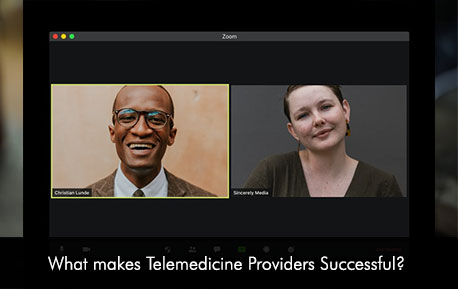Telemedicine EMR software has seen a tremendous boom since the COVID-19 pandemic as governments and medical organizations urged patients to use video sessions to communicate with their medical providers for quick and effective diagnosis and treatment. It won’t be too long when telemedicine will be one of the mainstream services offered by physicians. When it comes to patient care, patients usually want the following aspects in healthcare;
- Easy accessibility of care
- Patient experience
- Quality of clinical outcomes
- Value of care
The telemedicine platform is seen fit to extend accessibility to larger patient populations through virtual sessions and leaves patients satisfied with lower wait time and the virtual waiting room feature which can be customized.
The 5 things that make telemedicine providers successful
- Have a comprehensive plan – Whenever you are starting to provide health services on a new platform it is advised to have a cohesive plan which outlines your goals and what you want to achieve. This plan will make sure that providers are going in the right direction and not losing focus. The plan can define targets like, do you aim to increase revenue by seeing more patients via the telemedicine platform? Or you want to offer new services such as lifestyle coaching virtual sessions for patients who want to lose weight and have a healthy diet. Irrespective of your mission, the plan can transform your practice by staying true to your healthcare objective.
- The technology you choose – Telemedicine services can be offered via telemedicine EMR software solutions. As a provider, you should look for a software system that is user-friendly for both patients and physicians. The telemedicine EMR software should offer robust features of file sharing, image sharing, EMR software integration, provider scheduling, and support for slow internet connection. Fortunately, there are some great telemedicine EMR software vendors you can select from such as athenahealth EMR Software, Kareo Clinical EMR Software, and Epic EMR Software.
- You should provide the right experience to your patients – At the end of the day, patients value a good patient experience so providers should make sure that the video sessions are comfortable and useful to them. You can offer the right experience by having a suitable background and reduce any noise and sound from other sources to communicate seamlessly.
- Market your practice – It’s always a good idea to create awareness about your business and this is also true with telemedicine. You can market about the services you offer via the telemedicine platform by making a website. This website will provide all the necessary information to your patients and the benefits of remote care can also be mentioned to attract more patients.
- Take patient feedback seriously – When you execute a plan you can never be sure it’s perfectly smooth, hence taking feedback from your patients and staff is important. The feedback will tell you where your service can improve and what are the features of the services that make patients satisfied. By knowing the good, the bad, and the ugly you can improve and make changes for a successful practice.
Conclusion
The above-mentioned strategies will support telemedicine providers to offer the best care to their patients and also increase patient outcome levels using virtual sessions and video visits. The telemedicine platform is an effective way to reach out to patients even after the pandemic is over.







